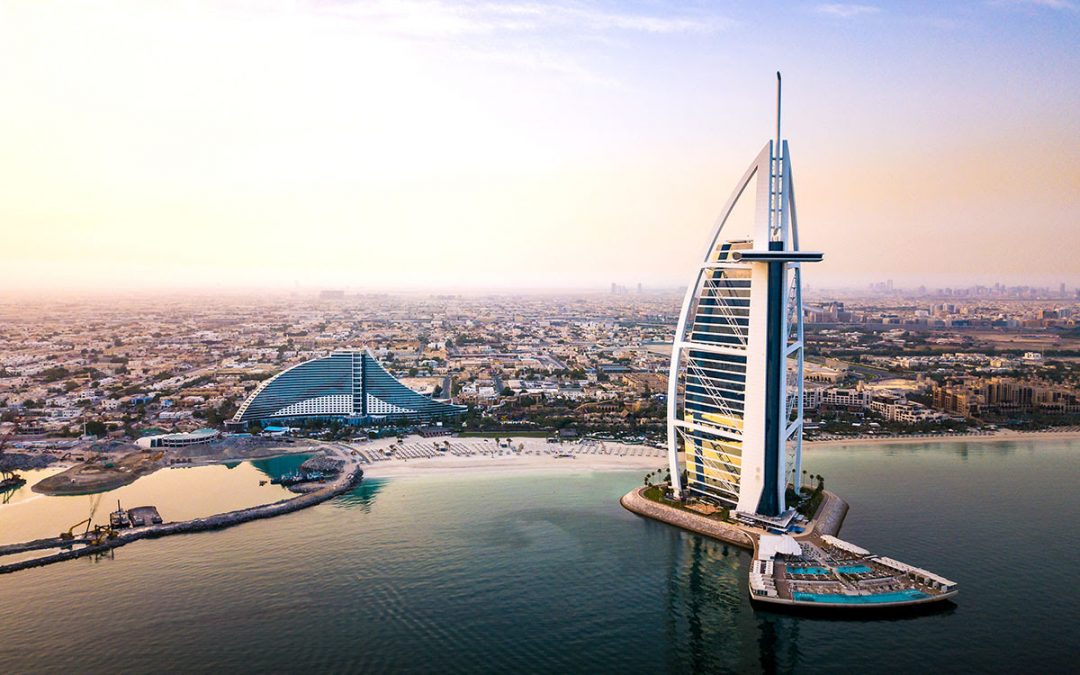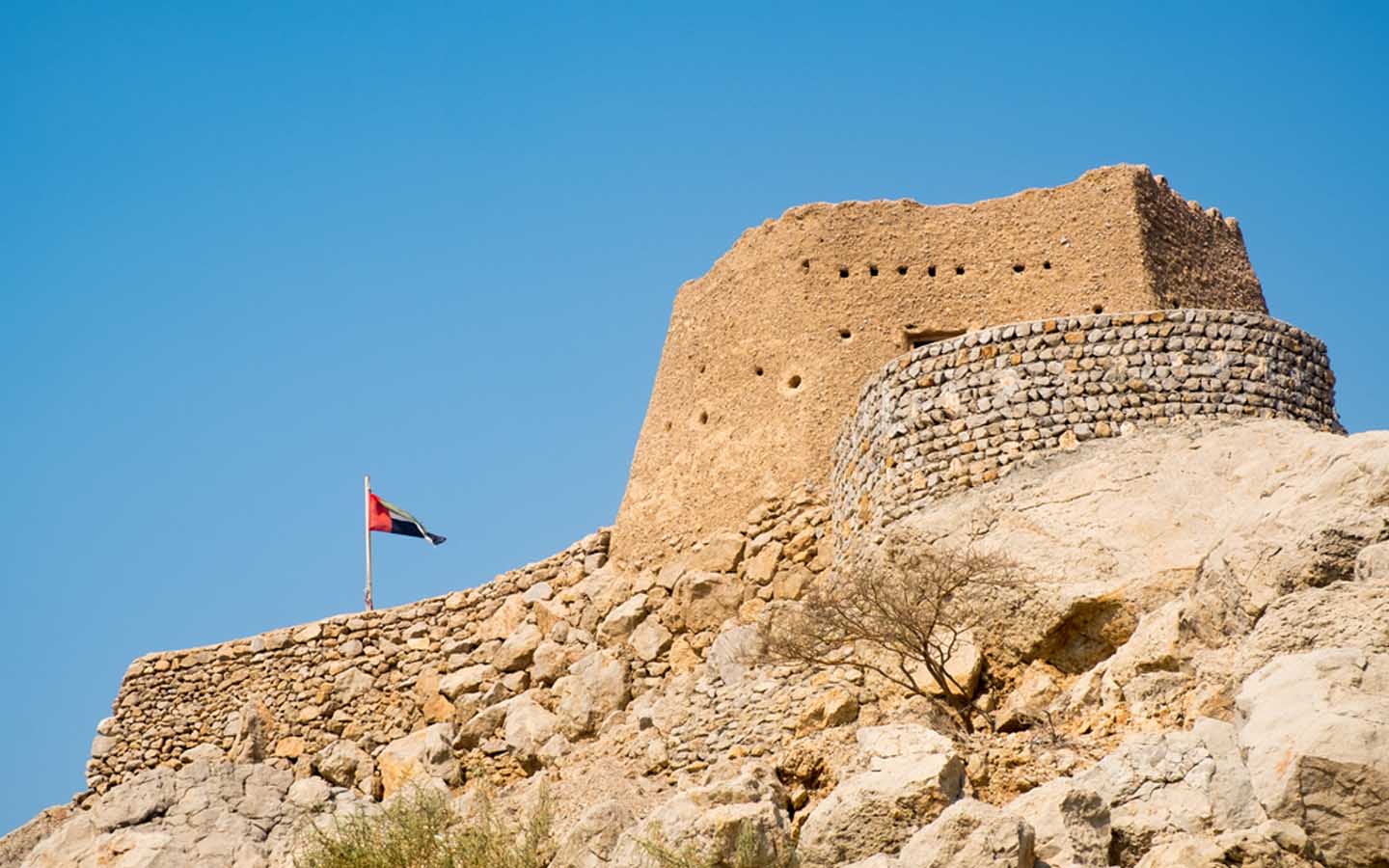Featured Image : Dubai Dubai is the capital of the Emirate of Dubai. In the 18th century, it was a...


Featured Image : Dubai Dubai is the capital of the Emirate of Dubai. In the 18th century, it was a...
Features information that is relevant to travellers who are thinking about and actively planning a visit Dubai or any part of the Arab World.

Dhayah Fort was built in the 18th-century in Ras Al Khaimah, United Arab Emirates (UAE) as a protection against British invasion and was the site of a battle during the Persian Gulf campaign of 1819, when British troops captured the fort after a brief siege. After the fall of Dhayah, a treaty known as General Maritime Treaty of 1820, was signed between the rulers of Abu Dhabi, Sharjah, Ajman, Umm Al Quwain, Ras Al Khaimah and Great Britain in January 1820, with the nearby island state of Bahrain acceding to the treaty in the following February. This treaty endured until the independence of the United Arab Emirates on 2 December 1971.

The Dhayah fort offers a stunning 360-degree view of its scenic surroundings as it is on top of a hill. It is accessed only by a zigzag staircase of more than 100 steps. Climbing the staircase is a bit of a challenge but the scenic view from the fort is well worth the effort. You also get the views of the beautiful sea, majestic Hajar Mountains, a splendid oasis and the city around it.
In the summer it can get very hot so make sure to cover up against direct sunlight and apply sunscreen and wear sunglasses and a cap to protect your face and eyes.

There is a watchtower located just outside Al Jazirah Al Hamra. This tower was constructed about 100 years ago to protect the water wells in the village of Al Jazirah Al Hamra.
The ‘Sur” fortification was constructed using mud bricks at the foot of the hill. This ‘Sur’ was used as a retreat for local people. The fort, the watchtower and the “sur’ formed the fortification of Al Jazirah Al Hamra.
If you are a first time visitor it would be better to go with a guide for navigation, as the fort is located away from the main road of Al Rams. The area is hot, so carry plenty of water to stay hydrated. If you are visiting in summer you will be exposed to lot of direct sunlight. Apply sunscreen and wear sunglasses and a cap to protect your face and eyes. The visiting hours are 09:00 am to 05:00 (Sunday to Thursday).
While you are in Ras Al Khaimah, you may also want to visit Wadi Bih in Ras Al Khaimah. Some other prominent historic places in the emirate include the haunted Al Qasimi Palace and the National Museum of Ras Al Khaimah.
The National Museum is located in one of the oldest forts in the country. The fort also served as the residence of a ruling family before it was converted into the National Museum in the 1980s. In fact, amongst the countless artifacts and historical exhibits are original treatises signed by former ruling families. The excavated artifacts show that the Ras Al Khaimah has been home to several trading civilisations since 5000 BC and has a rich history and continuous settlements for 7,000 years. From traditional weapons to fishing instruments, and ancient pottery, the museum is a great spot for anyone looking to glimpse into the emirate’s past.

Hatta is located nearly 130 km from central Dubai, in the United Arab Emirates. It is located high in the Hajar Mountains. Formerly an Omani territory, its ownership was transferred to Dubai in or around 1850. Hatta’s craggy mountain cliffs, scattered springs and lush valleys offer a stark contrast to the glassy facades of the city.
Hike up the Hajar mountains and you will get to see breathtaking views of the historical village. The area was once called Al Hajerin, or Al Hajeran, in reference to the two mountain peaks guarding its north and south borders.
The old village of Hatta includes two prominent military towers from the 1880s, a fort from 1896 and the Juma mosque, which was built in 1780 and is the oldest building in Hatta. The traditional water supply was through the falaj system, which also has been restored.
The restored, centuries-old Hatta Heritage Village features a defensive tower, stone houses with palm-frond roofs, and falaj, the traditional water system. Other exhibits include traditional weapons, furniture and crockery. At the nearby Hatta Dam, the Hatta Reservoir Visitor Point overlooks the pools of striking green water.
Since Hatta is located in the mountains, it was the summer habitation of Dubai-based families escaping the heat and humidity of the coast and trying new outdoor activities.
The Hatta Dam was constructed in the late 1990s. Hatta Dam is now one of the main attractions in the area, with the bright, turquoise water set against the earthy rock for a picturesque vista. Visitors can drive along the dam and stop at viewpoints for photographs, or trek across it and down the hilly terrain or kayak across the quiet lake formed by the dam.

Hatta Fort, built in 1896, is one of the most significant architectural monuments in the UAE. The structure served as a residence and defence facility with a large internal courtyard and an 11m-high watchtower. The building was restored in 1995. The two round watchtowers overlooking the mountain village were built in the 1880s. They are located 2.5m above ground level with a small door and semi-circular staircase leading to the roof. Guards would use ropes to scale the towers and enter through the doors.
Hatta Hill Park was built in 2004. The nearly 64sqkm area is popular for picnics and barbecues, as well as a tower, which makes for an excellent vantage point.

Hatta Heritage Village in the central town is a restored museum. It comprises 30 buildings, including huts and houses, reconstructed as they were hundreds of years ago. The Village also houses relics and documents of past life, where you’ll learn about Dubai’s Arabian heritage from food to folklore. There are two watchtowers and a fort, as well as a mosque from olden times. The museum also hosts several events during UAE holidays such as National Day (2 December).
Hatta Wadi Hub is the town’s home of action and adventure, open in winter. Here you can try your hand at archery and axe throwing. You can go twin ziplining with a friend. You can opt to paraglide with the Bird Eye Parachuting Club that will take you soaring into the air 500 feet off the ground. The 52 km of mountain biking trails provide cross-country bike paths of varying difficulty levels, encouraging novices and professionals to enjoy the picturesque alleys.
If you want to stay overnight, book at the Hatta Damani Lodges or Hatta Sedr Trailers, both providing chic accommodation nestled in the mountains. Hatta Dome Park will give you the ultimate glamping experience. Hatta Caravan Park is the first luxury caravan park in the region.
The JA Hatta Fort Hotel is great if you’re looking for a resort-style stay. The hotel has its own restaurants, spa, mini golf and petting zoo, while every room and suite comes with mountainside views.
Larger groups visiting Hatta can choose from one of several farm house rentals, including The Reef and Happiness Farm, each complete with facilities such as BBQ areas and a pool for the kids to splash around in.

Al-Hajar Mountains are in the eastern United Arab Emirates (UAE) cutting through the northern interior of the UAE. The rocky and rugged terrain provides a serious challenge for hiking enthusiasts. For nature lovers, the wadis (dry riverbeds or valleys) hidden within this region are prime territory for hiking, climbing, and bird-watching. Specialised adventure tour operators in Dubai and Ras Al-Khaimah offer wadi tours focused on these activities.
The Hajar Mountains are also great for road trips. Al Hajar Mountains extend for 700 kilometres (430 miles) through the UAE and Oman. The mountains are rich in plant life compared to the rest of Arabia. The lower elevations are covered with shrub land while at higher elevation between 3,630 and 8,250 ft there are wild olive and fig trees. There are also mammals and birds thriving in this mountain.
Some of the small Hajar Mountain villages in Ras Al-Khaimah and Fujairah are scattered with historic watchtowers and small forts, which make good stopovers along the way.
In recent years Hatta has become one of the most popular Hajar Mountain bases providing kayaking on Hatta Lake and mountain biking in the surrounding area.

Only a part of the Hajar Mountains is in the UAE, but most of its territory is located in Oman. Before visiting the mountains, make sure that you have proper visa and travel authorisation for Oman as well.
It is good to pack well before a hiking trip to the Hajar Mountains as you may find yourself away from most of the population. There are a few villages nearby, but it’s unlikely that hikers will be able to purchase food or water. If you wish to camp out in the beautiful mountain range, you should also bring along your camping equipment. You should also have warm clothing as temperature may drop to below 0 degrees Celsius during winter, and it will be chilly during the traditionally hot summers.
Visitors are free to camp anywhere other than the cultivated areas, but should look for
higher spots to set up camp and avoid wadis as the wadis quite often flood unexpectedly. You should bring your own camping gear for cooking and sleeping as these things will not be available in the range.
The Hajar Mountains are also full of historical spots, such as the archaeological sites of Bat, Al-Khutm and Al-Ayn. These ruins tell the story of the people and their simple life long before skyscrapers and luxurious hotels.